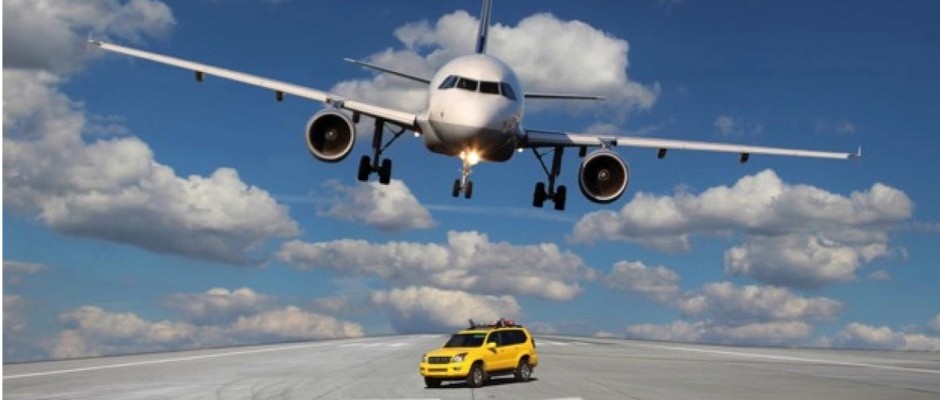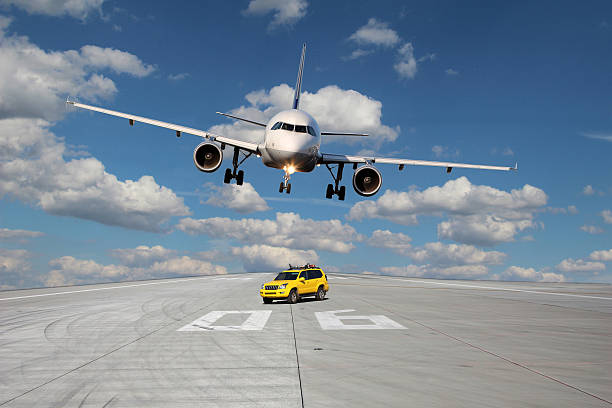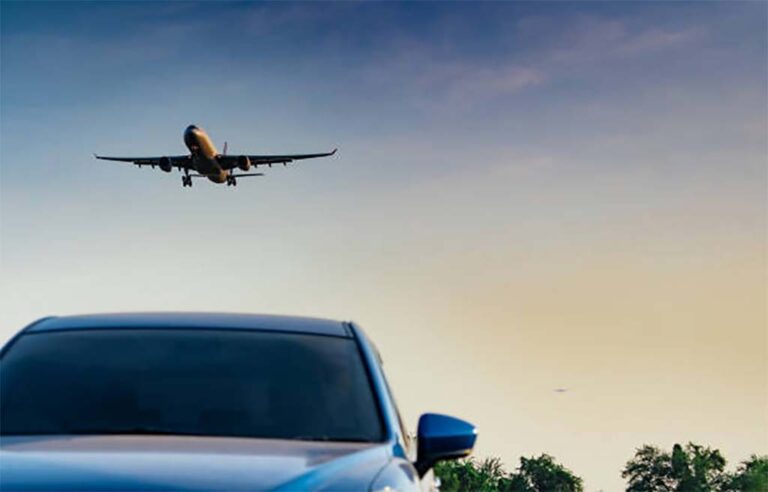Comparing the safety of cars and planes involves multiple factors. Car accidents are more frequent due to the high number of vehicles on the road, but they often result in minor injuries. Cars are equipped with safety features to mitigate the impact of accidents. Human factors, such as driver behavior, significantly contribute to car accidents.
In contrast, airplane accidents are less frequent but can be more catastrophic. The aviation industry prioritizes safety, employing advanced technology, redundancy systems, and rigorous maintenance procedures. Flying is generally considered safer on a per-mile basis, with a lower risk of fatal accidents compared to driving.
However, individual control over safety differs, as drivers have more direct influence in cars, while airline passengers depend on pilots, aircraft maintenance, and aviation regulations. Both modes of transportation continually improve safety through technological advancements and regulatory measures.
How do safety features in modern cars mitigate the impact of accidents?

Modern cars are equipped with a variety of safety features designed to mitigate the impact of accidents and enhance overall occupant safety. Here are some key safety features commonly found in modern vehicles:
Airbags
Airbags are designed to inflate rapidly upon impact, providing a cushion for the occupants and reducing the risk of injury. Most modern cars have multiple airbags, including front airbags, side airbags, and curtain airbags.
Anti-lock Braking System (ABS)
ABS prevents wheel lock-up during hard braking, helping the driver maintain steering control. This can be crucial in emergency situations, reducing the risk of skidding and collisions.
Electronic Stability Control (ESC)
ESC helps prevent skidding and loss of control by automatically applying brakes to individual wheels if it detects that the vehicle is losing traction.
Traction Control System (TCS)
TCS prevents wheel spin during acceleration by adjusting engine power or applying brakes to individual wheels. This is especially useful in slippery conditions.
Collision Avoidance Systems
These systems use sensors and cameras to monitor the road and surroundings, providing warnings or even taking corrective actions to avoid collisions. Some examples include forward collision warning, automatic emergency braking, and lane departure warning systems.
Blind Spot Detection
This system alerts drivers when there is a vehicle in their blind spot, helping prevent collisions during lane changes.
Adaptive Cruise Control
This system maintains a set speed but can also automatically adjust the speed to maintain a safe following distance from the vehicle ahead.
Backup Cameras and Parking Sensors
These features assist drivers in parking and maneuvering by providing a clear view of the rear and alerting the driver to obstacles.
Pre-Collision Systems
These systems use sensors to detect an impending collision and can automatically apply the brakes or tighten seat belts to minimize the impact.
Structural Design and Crumple Zones
Modern cars are designed with crumple zones that absorb and distribute crash forces, helping protect the occupants by reducing the severity of the impact.
Side-Impact Beams
Reinforcements in the doors help protect occupants in the event of a side collision.
Seatbelt Pretensioners
These devices automatically tighten the seatbelt in the event of a collision, reducing the forward movement of the occupants.
What measures ensure the aviation industry’s emphasis on safety?
The aviation industry places a strong emphasis on safety, and various measures are implemented to ensure the highest possible level of safety for passengers, crew, and the public. These measures involve a combination of regulations, technologies, training, and organizational practices. Here are some key factors contributing to the aviation industry’s emphasis on safety:
Regulatory Frameworks
Aviation authorities, such as the Federal Aviation Administration (FAA) in the United States and the European Union Aviation Safety Agency (EASA) in Europe, establish and enforce strict regulations governing the design, maintenance, and operation of aircraft. These regulations set the standards for safety in the industry.
Certification Standards
Aircraft and components undergo rigorous certification processes to ensure they meet safety standards. This includes testing for structural integrity, engine performance, avionics functionality, and other critical aspects. Certification is conducted by aviation authorities in accordance with international standards.
Pilot Training and Certification
Pilots undergo extensive training and must meet stringent certification requirements. Training covers a wide range of topics, including aircraft systems, emergency procedures, navigation, and decision-making. Regular recurrent training is also required to keep pilots updated on the latest technologies and procedures.
Air Traffic Control (ATC)
Air traffic controllers play a crucial role in ensuring safe separation between aircraft. They provide instructions to pilots to maintain safe distances and guide them through takeoff, landing, and en-route phases. The ATC system is designed to prevent collisions and ensure efficient air traffic management.
Maintenance Procedures
Strict maintenance protocols are followed to ensure the airworthiness of aircraft. Regular inspections, routine maintenance checks, and adherence to manufacturers’ recommendations help identify and address potential issues before they become safety concerns.
Safety Management Systems (SMS)
Airlines and aviation organizations implement safety management systems to proactively identify, assess, and mitigate risks. SMS involves continuous monitoring and analysis of safety data to improve safety performance over time.
Reporting and Investigation
A robust reporting and investigation system encourages the reporting of safety incidents or concerns without fear of reprisal. This information is crucial for identifying trends, implementing corrective actions, and preventing future incidents.
International Collaboration
The aviation industry operates globally, and international collaboration is essential for maintaining consistent safety standards. Organizations like the International Civil Aviation Organization (ICAO) work to establish and promote global aviation safety standards.
Technological Advancements
Continuous advancements in aircraft technology contribute to enhanced safety. Features such as collision avoidance systems, advanced avionics, and improved materials all contribute to making aircraft safer and more reliable.
Emergency Response Plans
Airlines and airports have well-defined emergency response plans in place to handle various scenarios, including accidents and natural disasters. These plans involve coordination with local authorities and emergency services.
Safety Culture
A strong safety culture is cultivated within aviation organizations, emphasizing the importance of safety at all levels. This includes fostering open communication, encouraging a questioning attitude, and promoting a commitment to continuous improvement.
How does the risk of fatality per mile compare between driving and flying?

The risk of fatality per mile traveled can vary significantly between driving and flying. Generally, flying is considered to be safer than driving in terms of fatalities per mile, but it’s important to consider various factors that influence these statistics.
Driving
The risk of a fatality per mile driven is influenced by factors such as road conditions, weather, driver behavior, and vehicle safety features. The fatality rate for driving is typically measured in fatalities per 100 million vehicle miles traveled (VMT). In the United States, for example, the fatality rate for motor vehicle crashes is typically in the range of 1 to 1.5 fatalities per 100 million VMT.
Flying
The risk of a fatality per mile flown is influenced by factors such as aircraft type, flight conditions, pilot experience, and maintenance practices. The fatality rate for flying is often measured in fatalities per 100 million passenger miles.
According to the National Transportation Safety Board (NTSB) and other aviation safety organizations, the fatality rate for commercial air travel is generally lower than that of driving, often in the range of 0.1 to 0.2 fatalities per 100 million passenger miles.
It’s important to note that while flying is statistically considered safer than driving on a per-mile basis, these figures can vary depending on the specific context. For example:
Short Distances
For very short distances, such as commuting within a city, driving may have a lower risk per mile than flying because the time and risks associated with air travel procedures (security checks, boarding, etc.) are significant for short flights.
General Aviation
The risk profile differs between commercial air travel and general aviation (private planes, small aircraft). General aviation has a higher accident rate compared to commercial aviation.
Type of Road or Flight
Rural roads with lower traffic and less developed infrastructure may have different risk factors than well-maintained highways. Similarly, non-commercial flights, especially those involving smaller aircraft, may have different risk factors compared to commercial air travel.
External Factors
Natural disasters, terrorism, or other external factors can impact the safety of both modes of transportation.
FAQ’s
Is walking safer than flying?
Walking is generally safer than flying on a per-mile basis.
Which is the safest form of travel?
Commercial air travel is statistically considered one of the safest forms of transportation.
What is the riskiest form of travel?
General aviation, especially involving smaller private planes, is often considered riskier than commercial air travel or driving.
Is it safer to fly at night?
The safety of flying at night is comparable to daytime flying, as modern aviation is equipped with advanced technology for safe operations in various conditions.
Is it safe to fly every day?
Flying every day, especially on commercial airlines, is generally safe, given the stringent safety standards, regulations, and continuous monitoring of the aviation industry.
Final Words
When we look at cars and planes, each has its own safety features and challenges. Cars have more accidents, but they are often minor. Planes, on the other hand, have fewer accidents, but when they happen, they can be more serious. Flying is generally considered safer per mile, but it depends on pilots, maintenance, and regulations.
Both cars and planes are working to be safer, always improving with new technology and rules. So, whether you’re on the road or in the sky, safety is a top priority.

